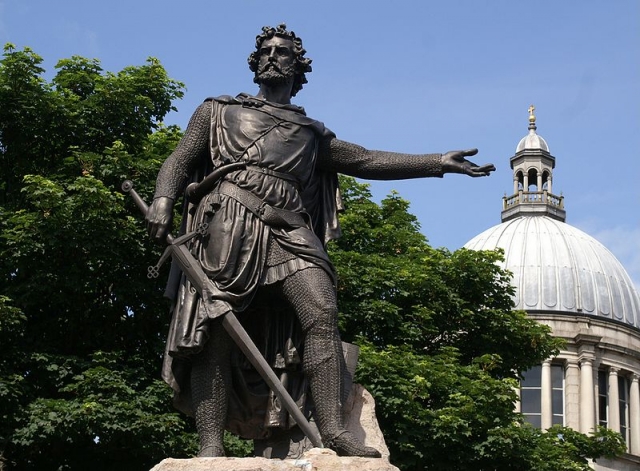2011 Branch lecture: Revisiting William Wallace and the Declaration of Arbroath
The first lecture in the Glasgow & West of Scotland Branch

"Revisiting William Wallace and the Declaration of Arbroath" talk by Professor Dauvit Broun
Professor Broun looked at ways of advancing knowledge and understanding through (1) The discovery of new original documents (2) The discovery of new information in a later document (3) The proposal of a new way to read and explain an existing document.
Firstly, Professor Broun looked at a new document listing a semi-official view of a sheriff of London written shortly after the execution of William Wallace listing the charges and discussed London's lack of understanding of how he came to be the sole Guardian of the Scottish realm. They thought he was actually claiming to be king.
Secondly, Professor Broun referred to a sixteenth century document the ‘Schoyen Chronicle,' as information about people connected with Wallace; for example, Andrew Murray, Simon Fraser and Richard of Lundie.
Thirdly, Professor Broun's proposal of a new way to read and explain an existing document showed in examining the Declaration of Arbroath the importance of taking into account context. In particular, Professor Broun considered the ‘deposition clause.' He said that a fundamental question was " What did it mean freshly written?"
He went on to ask "What's going on?" in the deposition clause. Why should Robert Bruce give up what he has "begun" and "choose" subjection to "the king of the English people or to the English people?" Consideration was given both to constitutional matters and to the politics of the king's position.
This consideration was taken further in Professor Broun's response to the audience's questions. He asked "Who decided to include the deposition clause?" and "Who was the intended audience?" He concluded that the intended audience was "the people who sealed it- the barons."
How secure was Robert Bruce in 1320? Professor Broun's view was that his position was "tenuous" because of the near failure of the line and Edward Balliol being still alive, being used by the English king.
Further discussion led on to the possibility of a connection between the Declaration of Arbroath and the threat to Robert 1. Analysis of the document raised two points, (a) The king who submits to the English will be expelled but it was inconceivable (b) As an alternative to Bruce, Edward Balliol was the obvious successor but he would need English support. Professor Broun concluded that the two points were "a defiant statement that the Bruce party will remain in charge;" even if there was no obvious successor they would choose a new king.
Ten questions were asked.
For further reading:
Edward J. Cowan For Freedom Alone - The Declaration of Arbroath ( 2003 )
Geoffrey W.S. Barrow Robert Bruce & the Community of the Realm of Scotland ( 2005 )
In contrast - Julian Assange The Unauthorised Autobiography ( 2011 ) - WIKKILEAKS showed what government agencies get up to. What can we do? The talk was about what our forebears did.

